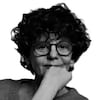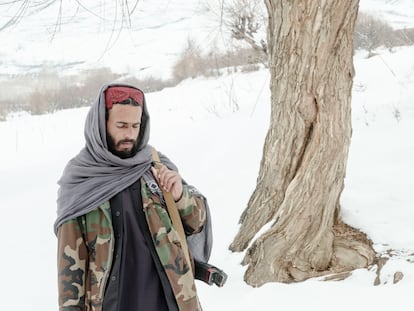From paper to pixels: new forms of collage
A new monographic project collects the works of over 100 artists, exploring modern takes on an old technique that continues to capture the spirit of the time.

Nothing is ever entirely new and yet, in the art of collage, everything is renewed. The subversion implicit in this artistic technique and its various actions — cutting, fragmenting, tearing, camouflaging, stealing, faking — disrupts all expectations while suggesting affinities and resonances that harmonize into one work of art. As unrestrained as it is adaptable, this form of visual expression, which secured its status as art in the early years of the 20th century, remains capable of capturing the spirit of the time by incorporating the elements that define an era. But what does it mean to speak of collage today, in the digital age, when the gesture that gave meaning to the practice — cut and paste — has been replaced by its computational alternative, copy and paste? What are the basic elements that qualify something as collage?
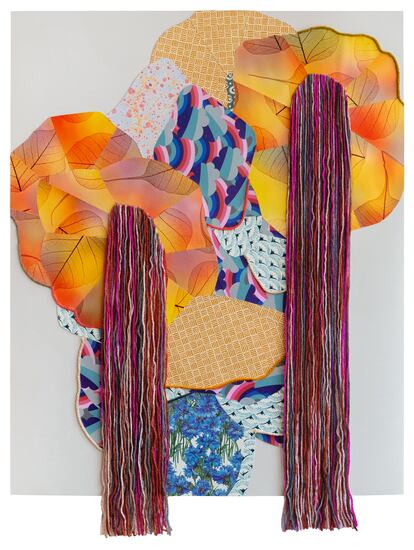

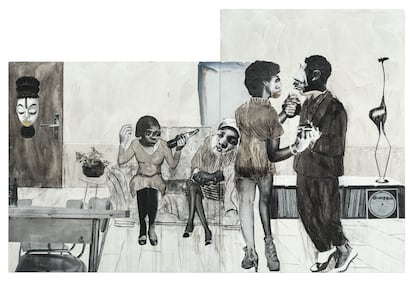
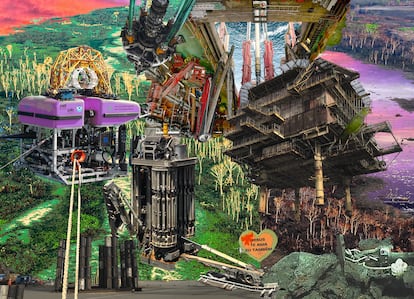

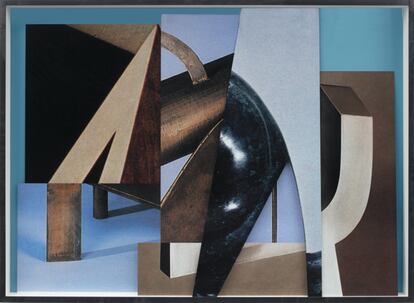
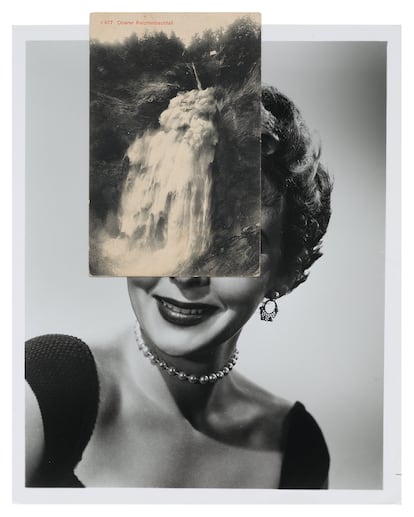
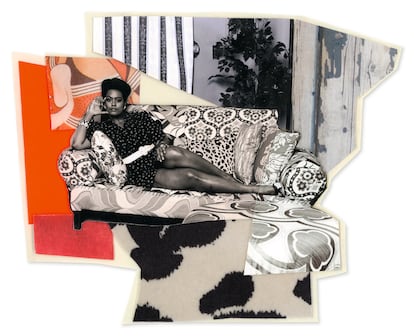
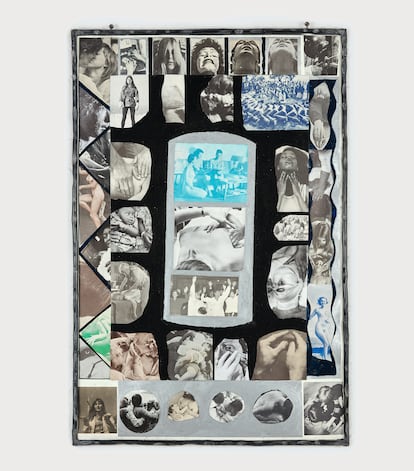

These are the question that give shape to a new project just published by Phaidon Press, Vitamin C+: Collage in Contemporary Art, the latest volume of the publisher’s Vitamin series, which was first launched in 2002. The series aims to take the pulse of different artistic disciplines, and to identify new practices and trends as they emerge. For this latest issue, Phaidon solicited the participation of 69 experts — museum directors, curators, collectors and critics — and tasked them with selecting 108 artists who currently use collage as a central component in their artistic practice. The resulting collection reflects, as historian Yuval Etgar writes in the book’s introduction, “the delicate balance between the potential and limitations implied by the practice.” While offering a wide range of interpretations on the art form, the monograph “constitutes a reminder of what is most at stake in contemporary collage: namely, the delimitation of edges and peripheries within a field whose territorial contours are virtually impossible to identify, and are in a state of permanent flux.”
The artists, featured in alphabetical order, are from 40 different countries as well as different cultures, contexts and generations. One of them is the British artist John Stezaker (Worcester, 1949), who began experimenting with collage in the mid-1970s — a moment associated with the incipient digital era and the emergence of theories of postmodernism — through his poetic and elegant juxtapositions involving postcards, stills from movies, and images taken from old illustrated books. Like many of the avant-garde gestures that preceded his work, Stezaker’s collages emerged as a response to mass culture’s consumption of printed material, and, as the critic David Campany wrote, “seem to put image destruction, or iconoclasm, [in] the service of a strange and subterranean iconophilia [love of images].”

The British artist Linder (Liverpool, 1954) took an even more radical approach to the practice, with the former vocalist for the experimental post-punk band Ludus provoking a public debate about her work’s candid revelations of hidden desires and taboos. The image of a naked, muscular woman with a steam iron for a head represented not only a continuation of Richard Hamilton’s 1960s pop sensibility, but a radical feminist protest against domestic entrapment. Today, the artist continues to create provocative images that take aim at gender inequality, and her work also appears in the new collection from Phaidon Press.
The book features a selection of powerful photomontages by Martha Rosler (New York, 1943), which reference, often with humor, various political and social issues. The American artist integrates her figures seamlessly into their scenes and, like the Surrealist Max Ernst, who pioneered the practice, manages to merge two irreconcilable realities, thus demonstrating how collage lends itself to the direct communication of a single, but sometimes complex, idea. “We are not a here and a there. We are all one, and this is crucial,” she says. In a similar vein, the work of Lorna Simpson (New York, 1960) shows the bodies of Black women overlaid in classical celestial maps, in a series titled Stars from Dusk to Dawn. Her work is not so much aimed at conveying a specific concrete meaning, but rather seeks to create new associations free from the constraints of conventional representation. Meanwhile, Frida Orupabo (Sarpsborg, Norway, 1986) whose works are often life-sized, merges historical photographs of enslaved women with others taken from eBay, Tumblr or Instagram: fragmented bodies, reconfigured to renegotiate the representation of African bodies, and to free them from cliché and stereotype.

The monochromatic scenes of domestic life by Neo Matloga (Mamaila, South Africa, 1993) capture the daily life of the artist’s childhood. His dreams and imagination were shaped by the radio programs his parents would listen to, which narrated local dramas, familial and romantic conflicts, and the news of the day. Collage provides Matloga with a form to incorporate new contexts that deconstruct the images with which he starts out, allowing a displacement in time and space that produces a new kind of reality.
The colorful still-life pieces of Daniel Gordon; the seductive visual universe of Sara Cwynar, where the old overlaps with the new, the analog with the digital, and the nostalgic with the futuristic; the enigmatic compositions of Simon Moretti, where the connections between knowledge, culture, memory and emotion are laid bare; the installations of the Chinese Guanyu Xu, considered a form of three-dimensional collage; and the sculptural projects of Canadian Erin Shirreff, which focus on the inevitable gap that arises between an object and its image; along with a long etcetera of authors, combine to complete this rich monograph that, in the words of its curator, Yuval Etgar, warns us that, “at the end of the day, and despite the fact that we are constantly reminded that we live in the age of globalization, crossing borders is no simple matter.”
Vitamin C+: Collage in Contemporary Art. Phaidon Press. 304 pages. $69.95 USD
Sign up for our weekly newsletter to get more English-language news coverage from EL PAÍS USA Edition
Tu suscripción se está usando en otro dispositivo
¿Quieres añadir otro usuario a tu suscripción?
Si continúas leyendo en este dispositivo, no se podrá leer en el otro.
FlechaTu suscripción se está usando en otro dispositivo y solo puedes acceder a EL PAÍS desde un dispositivo a la vez.
Si quieres compartir tu cuenta, cambia tu suscripción a la modalidad Premium, así podrás añadir otro usuario. Cada uno accederá con su propia cuenta de email, lo que os permitirá personalizar vuestra experiencia en EL PAÍS.
¿Tienes una suscripción de empresa? Accede aquí para contratar más cuentas.
En el caso de no saber quién está usando tu cuenta, te recomendamos cambiar tu contraseña aquí.
Si decides continuar compartiendo tu cuenta, este mensaje se mostrará en tu dispositivo y en el de la otra persona que está usando tu cuenta de forma indefinida, afectando a tu experiencia de lectura. Puedes consultar aquí los términos y condiciones de la suscripción digital.
More information
Últimas noticias
Most viewed
- Reinhard Genzel, Nobel laureate in physics: ‘One-minute videos will never give you the truth’
- Pablo Escobar’s hippos: A serious environmental problem, 40 years on
- Charles Dubouloz, mountaineering star, retires at 36 with a farewell tour inspired by Walter Bonatti
- Why we lost the habit of sleeping in two segments and how that changed our sense of time
- The fall of a prolific science journal exposes the billion-dollar profits of scientific publishing
